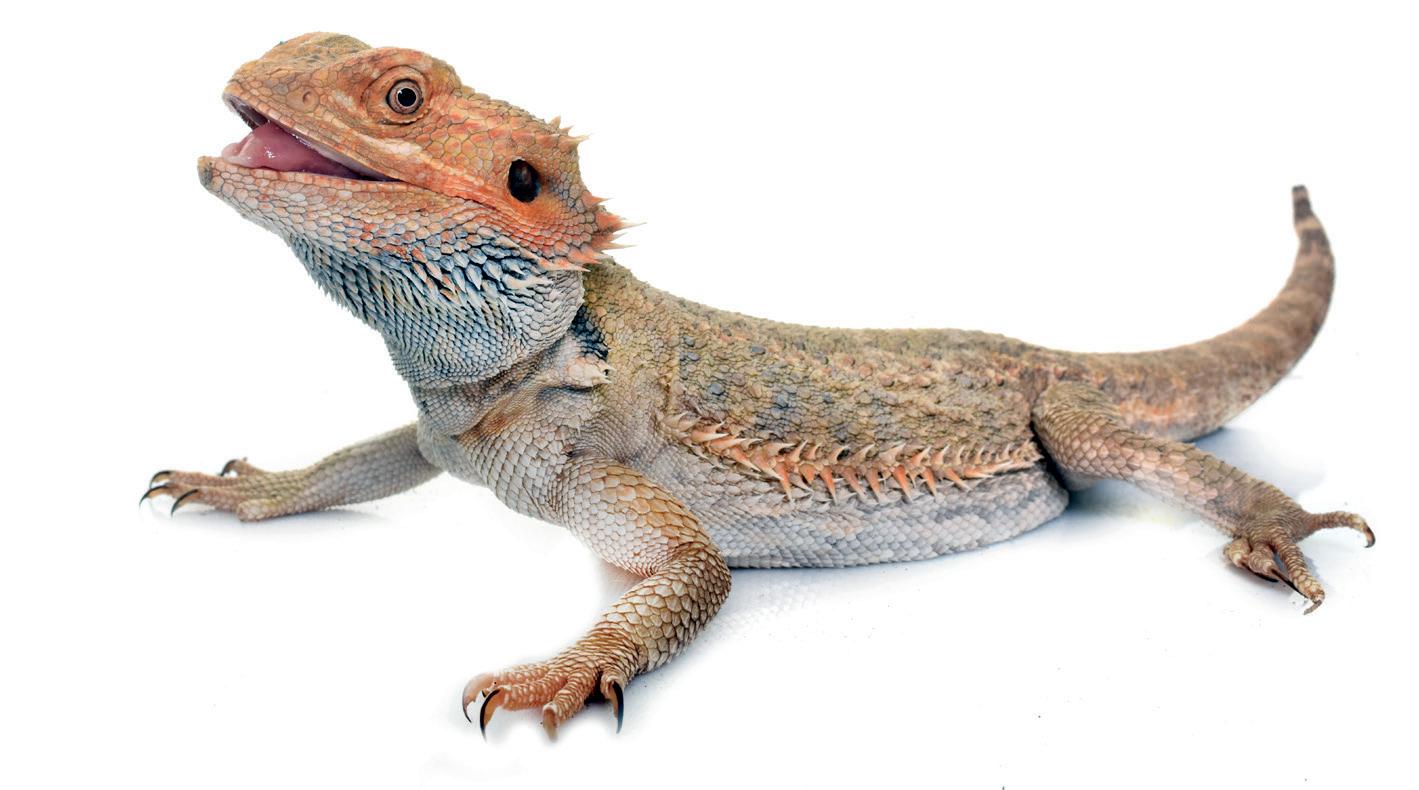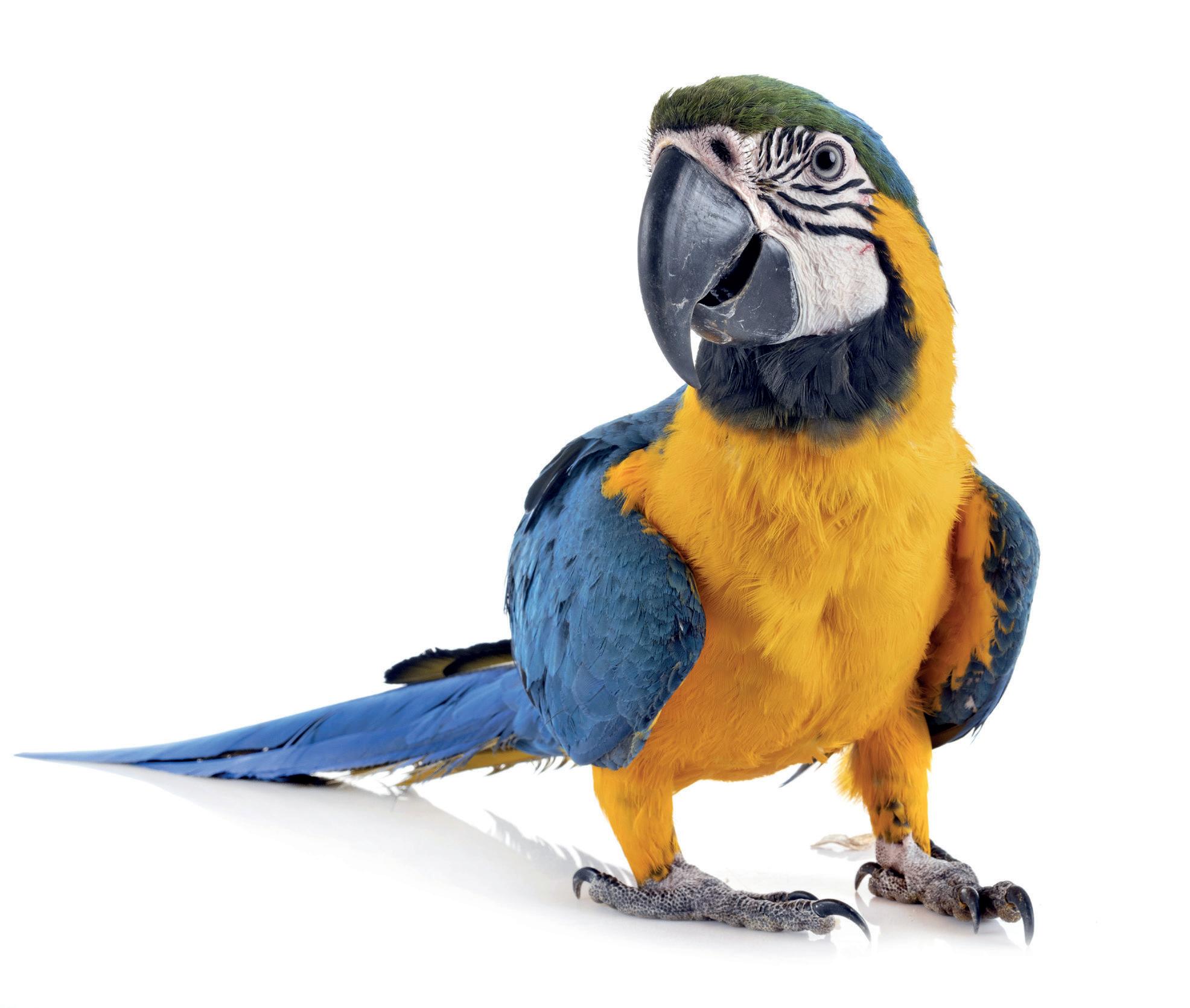
3 minute read
ENRICHMENT IDEAS
Bearded dragon diets
‘Enrichment’ can cover a whole range of topics. This can even stretch to the dietary needs of an animal. Bearded dragons are omnivorous lizards. This can be seen as a gold mine for enrichment opportunities. With a little research, even something as seemingly straightforward as feeding can bring a whole host of benefits. In the wild, bearded dragon diets change drastically as they mature. Juveniles will tend to feed on <90% insects, whereas adult males will feed on <90% plant matter (surprisingly, females will feed on a lower percentage of plant matter). Outback Australia experiences seasonal rains which naturally fluctuate the availability of different insects, the nutritional content of plant shoots, the abundance of flowers and much more. With a little planning, simulating these seasonal changes can help provide a pet bearded dragon with a very enriching diet.
Advertisement
Spring
Spring welcomes the fall of the first rains in the red centre. It is also frequently called the ‘wildflower season’ due to the high abundance of flowering plants. This makes it the perfect time to feed flowering plants such as dandelions, hibiscus, rose petals and pansies (providing they are clean are safe). An alternative to this would be to provide a commercial ‘flower mix’. Obesity is a common occurrence in bearded dragons so keepers must be careful but feeding sugary berries as treats during spring will help mimic that fresh wild plant growth. Lucky Reptile produces a ‘Bearded Dragon Candy’ which can be used sparingly to simulate this seasonal change. Birds will also be nesting during Spring and therefore the provision of some scrambled eggs will make an excellent addition to a bearded dragon’s diet. The rains tend to bring a good number of young insects and flies. Try incorporating smaller-sized locusts and a good number of curly-wing flies to simulate this seasonal change.
Summer
Summer is generally very hot but the monsoons towards the North of Australia mean it is also the season with the most rainfall. Increasing humidity within the enclosure on sporadic days throughout the season can help to mimic this rainfall. Dedicated keepers can go one step further by replacing their water dish to provide something large enough for the animal to soak in. Between spring and summer, locusts are most abundant and often grow to huge sizes. Try increasing the size of live foods and including a few large locusts for the dragon to hunt. The intense summer heat will impact plant growth, so adding prickly pear or more robust root vegetables to the animals’ usual leafy greens is a good idea.
Autumn
Autumn is warm and dry. This means bearded dragons are likely to be very active in searching for high-fat foods before the cooler temperatures begin to set in. A great way to exercise a bearded dragon (particularly a young one) is to allow calci-worms to pupate and turn into black soldier flies. Although these flies are harmless, they do look rather menacing and will buzz around the vivarium creating an excellent opportunity to chase them. An edible plant kit is also worth investing in during this time of year. Not only does it ensure there is a steady supply of fresh, healthy greens, but these leaves can be picked at different points as they grow and then scattered across the terrarium. This will force the dragon to search across the enclosure to find its food. At this point, dried commercial diets such as the ProRep Botanical Mix can begin to be incorporated into the main diet. Alongside fresh greens, the dried leaves will add new textures and simulate drier conditions. This should be provided throughout Autumn and Winter.
Winter
Winter is cold (sometimes freezing) and food becomes more scarce. In captivity, it is not necessary to force animals to struggle but replicating this seasonal change by providing greater amounts of smaller prey is a good idea. Wild dragons may encounter more termites and grubs during this time of year. Therefore, feeding lots of bean weevils, calci-worms and meal worms can help replicate their hunting behaviours. Chopping plant material into smaller pieces may also add a bit of enrichment loosely based on the environmental conditions they may encounter in the wild. During this time, reducing daylight hours and allowing the night-time temperatures to drop a little lower than usual can also support this seasonal change. The cooler temperatures mean that digestion will generally take a little longer in Winter. Although there’s no concrete evidence to suggest that wild bearded dragons adapt their diets accordingly, the addition of Lucky Reptiles’ dried herbs mix will increase the amount of crude fibre available and help this process.
alongside a well-rounded and nutritious diet.











